CR2025 Vs. CR2032 Battery
Batteries come in different shapes, sizes, and types for various uses. Coin cells, also known as button cells, are small batteries often used in car key fobs, tiny flashlights, and calculators. Two common types are the CR2032 and CR2025, often found in watches and children's toys. This discussion will explore the similarities and differences between the CR2032 and CR2025 to find out if they can be safely exchanged.This article looks at the technical details, performance, and practical uses of two common lithium coin cell batteries. By examining their features, uses, and other options, it will help to understand how these batteries work in different electronic devices and how to choose or replace them based on specific power needs. This analysis helps to tell these two batteries apart and gives insights into what is better for various electronic applications, from everyday gadgets to more demanding tech.
Catalog
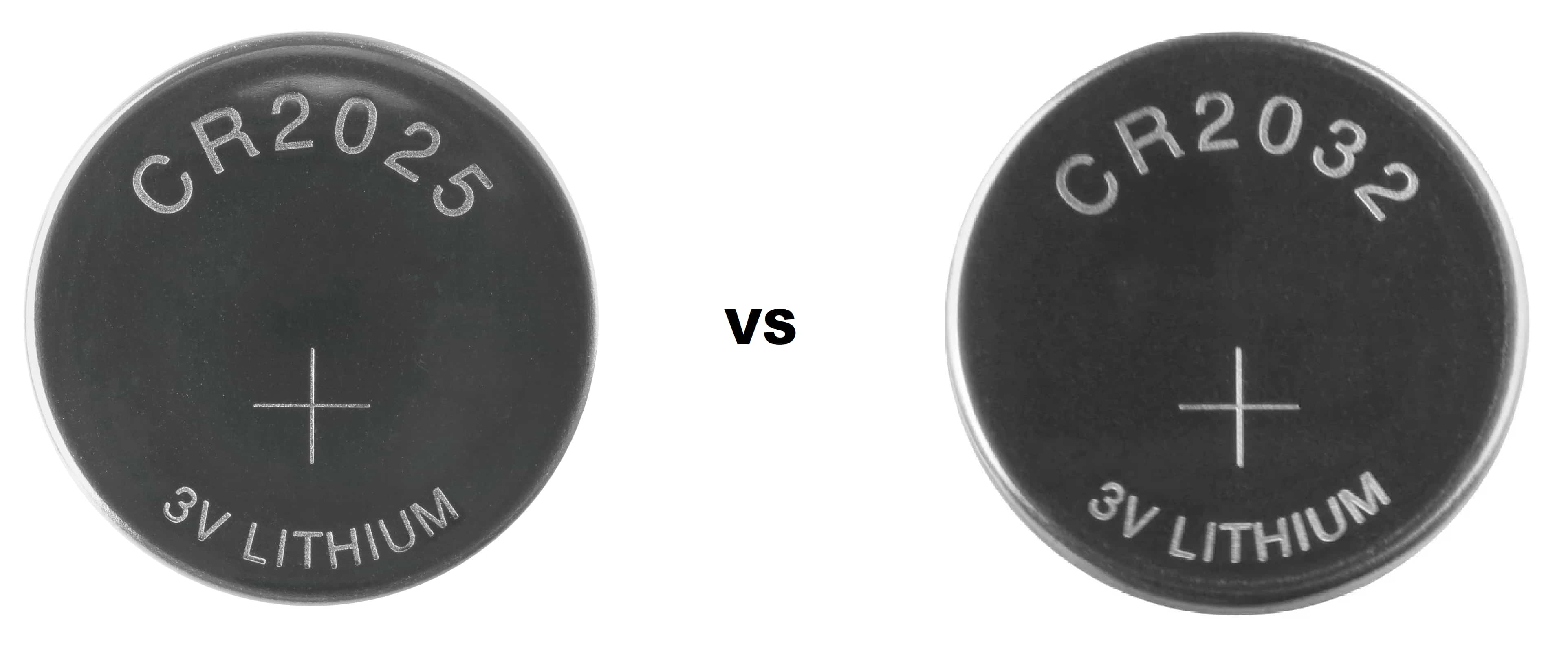
Figure 1: CR2025 vs. CR2032
Characteristics of the CR2025 Battery
The CR2025 battery is a small, single-use lithium coin cell, designed with a diameter of 20mm and a thickness of 2.5mm. It delivers a standard voltage of 3 volts and has a capacity of about 170mAh, though this might vary slightly by manufacturer. While it has a smaller capacity compared to the CR2032, the CR2025 is well-suited for gadgets that don't need a lot of power and have shorter operating periods.
Its shorter lifespan in devices, compared to the CR2032, is due to its smaller size and lower energy storage. However, the CR2025 remains widely used, particularly in devices where size is a major concern. This battery goes by different names depending on the brand, such as 280-205, 5003LC, DL2025, and ECR2025, reflecting its broad compatibility and frequent use in many electronics.

Figure 2: CR2025 Battery
Characteristics of the CR2032 Battery
The CR2032 battery is a bit larger and more powerful than the CR2025. It shares the same 20mm diameter but is thicker at 3.2mm, allowing it to store more energy. This battery offers up to 240mAh of capacity, depending on the quality and design of the manufacturer. The higher capacity means the CR2032 lasts longer, making it a popular choice for devices that need steady, long-lasting power.
The CR2032 is used in various applications, including car key fobs, computer motherboards, security systems, and advanced weapon sights. Its design also allows for connection tabs, making it versatile for different installation needs. Known by other names like 2032 and 5004LC, appreciated for its durability and versatility.

Figure 3: CR2032 Battery
Comparative Storage Life of CR2025 and CR2032 Batteries
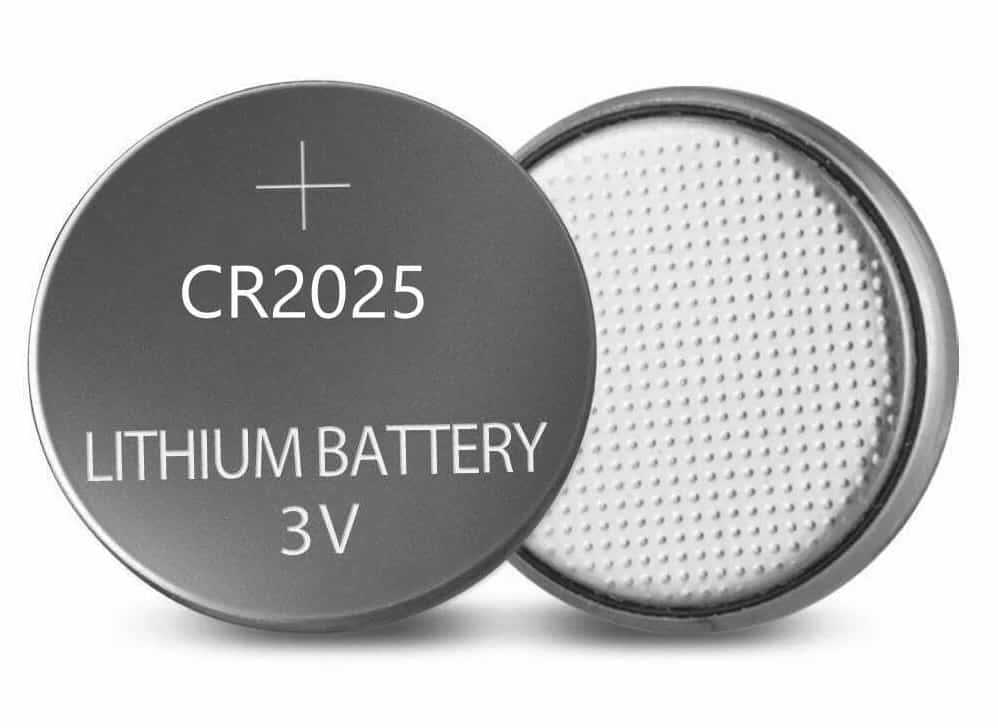
Figure 4: CR2025 Battery
The CR2025 battery lasts between 3 and 4 years when used in low-power devices like car key fobs, where it's not used often. Its capacity, around 165 mAh, is enough to handle the small bursts of energy required to send signals to the car. However, when used in more demanding devices, such as those in the Internet of Things (IoT) that need constant monitoring and data transmission, the battery life drops a lot. In such high-power situations, the CR2025 might only last about one year because the battery drains faster, showing its limits when continuous power is required.
On the other hand, the CR2032 battery, with a larger capacity of about 225 mAh, can last 4 to 5 years in low-power devices like car key fobs. Its bigger capacity means it can provide energy for a longer time, making it a more reliable choice for devices that are used occasionally. In key fobs where the power usage is low and infrequent, the CR2032 lasts longer without needing to be replaced often. However, in high-power devices like Apple’s AirTags that need constant operation to track and send location data, the CR2032's life span is about one year. This shorter lifespan happens because of the continuous energy demands that drain the battery faster, even though it has a larger capacity than the CR2025.

Figure 5: CR2032 Battery
Application Insights for CR2025 and CR2032
|
Battery Type |
Common Uses |
Advantages |
|
CR2025 |
Calculators: Provides consistent energy
for long-term use. |
Compact size with reliable power. |
|
Watches: Ensures precise timekeeping with
infrequent replacements. |
Ideal for devices with limited space and
modest power needs. |
|
|
Car Key Fobs: Lightweight, provides just
enough power for remote locking/unlocking. |
Durable, provides convenience in small
devices. |
|
|
Medical Devices: Powers digital
thermometers and blood glucose monitors, balancing size and power
effectively. |
Versatile for a range of low to moderate
power needs. |
|
|
CR2032 |
Medical Monitoring Systems: Reliable
power for continuous glucose monitors and heart rate monitors, reducing
battery changes. |
Larger capacity for devices needing
sustained power over time. |
|
Computer Motherboards: Backup power to
retain BIOS settings. |
Ensures reliability and safety in devices. |
|
|
Keyless Entry Systems: Provides
long-lasting power for remote access devices. |
Ideal for high-performance gadgets
requiring more energy. |
|
|
Both |
Wristwatches: Both batteries can be used
interchangeably based on the design and power consumption of the watch. |
Similar size allows interchangeability,
depending on specific power needs. |
|
Laser Pointers: Lightweight, efficient
power solution for small devices. |
Enhances performance and convenience in
modern electronic devices. |
|
|
Temperature Sensors: Ensures accurate and
reliable operation over time. |
Stable and long-lasting power suitable
for various applications in consumer electronics and industrial tools. |
Similarities and Differences Between CR2032 and CR2025 Batteries
Both CR2032 and CR2025 batteries provide a standard voltage of 3 volts, making them usable in many of the same devices. They also have the same diameter of 20 mm, so they fit into the same battery slots. The chemical makeup of these batteries is similar, containing lithium manganese dioxide that ensures consistent performance. This means they can power similar devices, from small gadgets like calculators and watches to some medical tools and computer parts. Both batteries are efficient and have a low self-discharge rate, allowing them to hold their charge for a long time when not in use that is ideal for devices that need reliable, long-term power.
|
Name |
Anode |
Cathode |
Nominal
Diameter |
Height/ Thickness |
Maximum
Voltage |
Capacity |
|
CR2025 |
Lithium |
Manganese Dioxide |
20.0 mm |
2.5 mm |
3.7V |
170 mAh |
|
CR2032 |
Lithium |
Manganese Dioxide |
20.0 mm |
3.2 mm |
3.7V |
220 mAh |
While these batteries have much in common, their differences mainly come down to size, capacity, and weight. The CR2032 is thicker, measuring 3.2 mm compared to the CR2025's 2.5 mm thickness. This extra thickness gives the CR2032 a higher capacity, around 225 mAh, compared to the CR2025's 160-170 mAh. As a result, the CR2032 lasts longer, making it better for devices that use more power or need a longer battery life. The CR2032 is also slightly heavier due to its thickness, though this weight difference is minor. Because of its higher capacity and longer life, the CR2032 is preferred for devices like digital thermometers, car key fobs, or more complex electronics like computer motherboards that need long-lasting power.
Using a CR2025 Battery in Place of a CR2032
You can use a CR2025 battery instead of a CR2032 with a few simple adjustments. The CR2025 is thinner, so you might need to add a small piece of foil or another conductor to make sure it fits properly in the device. This will help the battery make contact and work as required. However, it's good to know that the CR2025 won't last as long as the CR2032 because it has less power capacity. The CR2032 can run for a longer time, and better for devices that need steady power or are used often.
Both batteries provide the same voltage (3V), so the device should still work with a CR2025. But since the CR2025 has less power, it will run out faster, meaning you'll have to replace it more often, can be less efficient, especially for devices that are used a lot. So, while the CR2025 can work temporarily, it's best to switch back to a CR2032 as soon as you can to keep your device running smoothly.
Alternatives for CR2025
For those seeking alternatives to the CR2025 battery, there are several options to consider.
The CR2016 is thinner at 1.6 mm with a lower capacity of around 90 mAh, and it can be used with a spacer or an adjustable battery compartment.
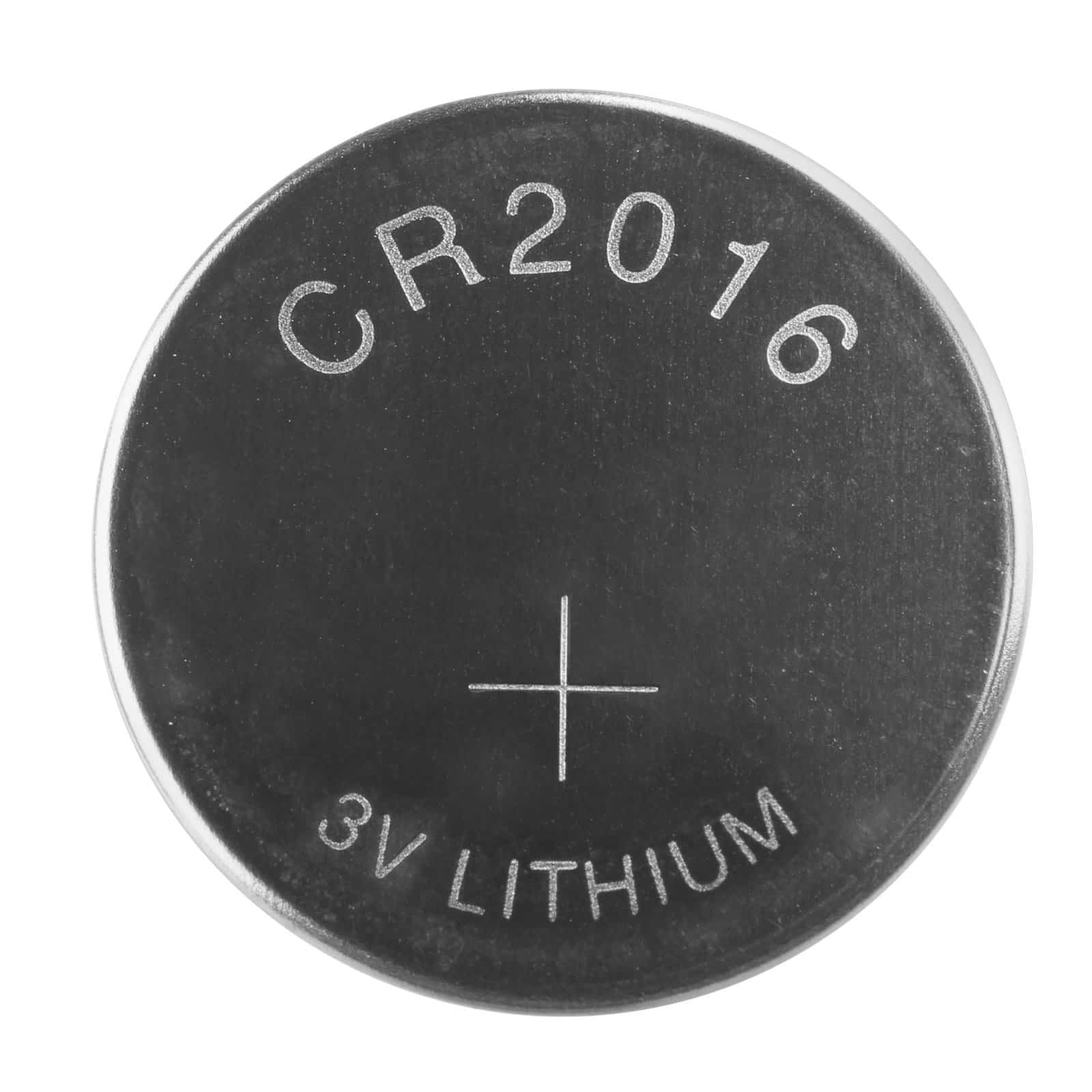
Figure 6: CR2016 Battery
The BR2025, made with lithium bromide, offers different voltage characteristics and improved performance in various temperatures.

Figure 7: BR2025 Battery
Another option is the CR2020, that is 2.0 mm thick and has a lower capacity of about 150 mAh and it may fit in some CR2025 devices with minor adjustments to the battery holder.
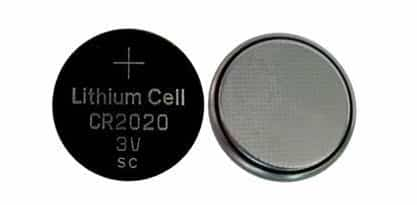
Figure 8: CR2020
The CR2025H is a high-drain version with a higher capacity, making it more suitable for devices with higher power demands while maintaining the same size as the CR2025.
Lastly, the LR2025 is an alkaline version of the CR2025, with a lower voltage of 1.5V, that may affect device performance depending on the voltage requirements.
Alternatives for CR2032
When considering alternatives to the CR2032 battery, the CR2030 is thinner at 3.0 mm and is used where reduced thickness is important, although it's less common.
The BR2032, also made with lithium bromide, is better suited for different temperature ranges.
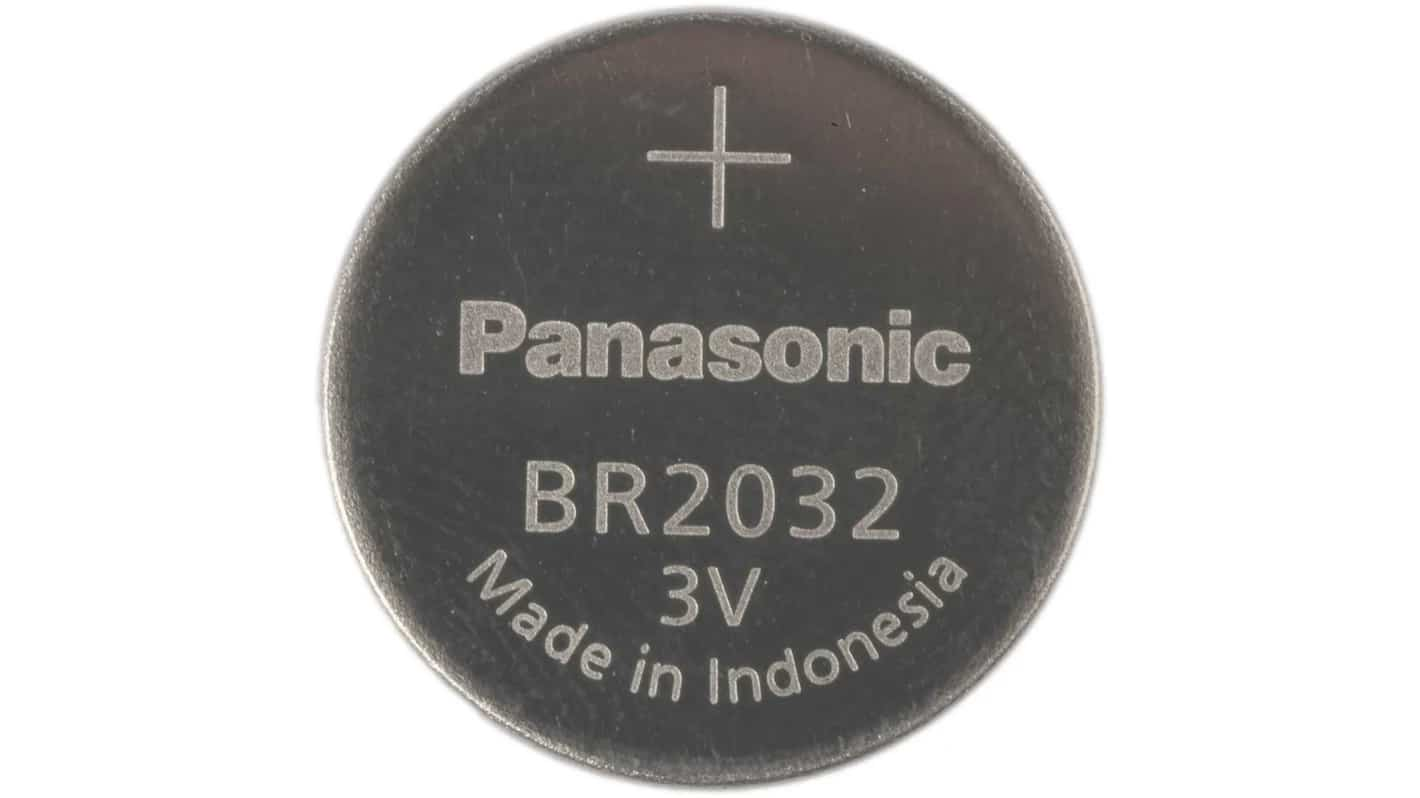
Figure 9: BR2032 Battery
The LR2032, an alkaline version, has a lower voltage of 1.5V, might not be suitable for all devices that require a 3V output.
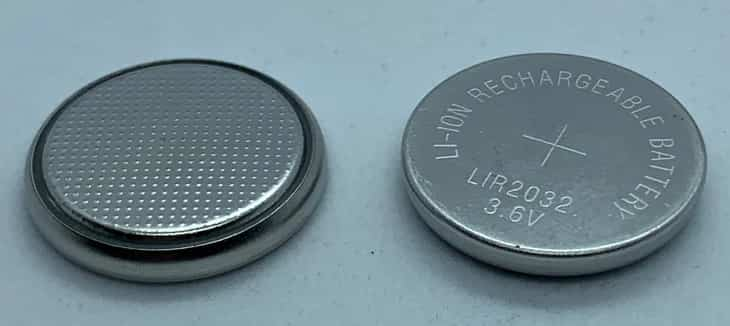
Figure 10: LR2032 Battery
Finally, the CR2032H is a high-drain version designed for devices needing more strong power delivery, maintaining the standard 3.2 mm thickness and offering similar or slightly higher capacity than the standard CR2032.
Conclusion
The close look at CR2025 and CR2032 batteries shows how important they are for modern electronic devices. Although they have the same voltage and chemical makeup, the CR2025 and CR2032 differ in size and capacity that makes them suitable for different uses, from medical tools to personal electronics. The CR2032 has a larger capacity and lasts longer, making it better for devices that need more power over time. On the other hand, the smaller CR2025 is great for gadgets that need short bursts of energy. Looking into other battery types, like the BR2025 and CR2032H, offers useful alternatives for specific devices, allowing power options to keep up with new technology and user needs. This article helps both designers and consumers make better choices for performance and reliability in their electronics.
Frequently Asked Questions [FAQ]
1. Can you use CR2032 instead of CR2035?
No, you cannot use a CR2032 instead of a CR2035 because the CR2035 doesn't exist. It's likely a typographical error. If you meant CR3032, note that a CR3032 is thicker than a CR2032, thus they are not interchangeable due to physical size differences.
2. Can I use a CR2016 instead of a CR2025?
Using a CR2016 in place of a CR2025 is not recommended. Both batteries are 20 mm in diameter, but the CR2016 is thinner (1.6 mm thick) compared to the CR2025 (2.5 mm thick). This size difference can lead to poor contact in the device's battery compartment, potentially causing intermittent operation or failure to power the device. Always use the battery size specified by the device manufacturer for optimal performance.
3. What is the difference between CR2025 and DL2032?
The main difference lies in their dimensions and capacity. Both are 3V lithium batteries but differ in size, the CR2025 is 20 mm in diameter and 2.5 mm thick, while the DL2032 (commonly just CR2032) is 20 mm in diameter and 3.2 mm thick. This makes the CR2032 thicker, with a higher capacity, around 220 mAh, compared to about 165 mAh for the CR2025, offering longer life.
4. What is the current of a CR2025 battery?
The CR2025 battery provides a continuous current of around 0.2 mA with pulse currents up to 15 mA, depending on the device's requirements. Its performance can vary based on the load and the conditions of use, such as temperature and the age of the battery.
5. At what voltage is a CR2032 battery dead?
A CR2032 battery is considered dead or near depletion when its voltage drops below 2.0 volts under load. Most devices designed to be powered by a CR2032 will stop functioning correctly or turn off once the battery voltage reaches this level, indicating it's time for a replacement.
6. How long do CR2032 batteries last in lights?
In lights, such as small LED keychain lights or decorative lights, the battery life varies based on how frequently and how long the lights are used. For example, if you use a LED keychain light for about 10 minutes every day, the CR2032 battery might last around 6 months to a year. This estimation decreases if the light is used more intensively or if it powers multiple LEDs or brighter LEDs, which draw more current.
7. How to tell if a CR2032 battery is good?
To determine if a CR2032 battery is still good, you can use a multimeter to check its voltage. A new CR2032 battery should have a voltage of about 3 volts. Here’s how you can check:
Set your multimeter to measure DC voltage.
Place the multimeter's red probe on the positive side of the battery and the black probe on the negative side.
Read the voltage display on the multimeter. A reading close to 3 volts indicates a good battery. If it shows less than 3 volts (e.g., below 2.7 volts), the battery likely needs to be replaced.